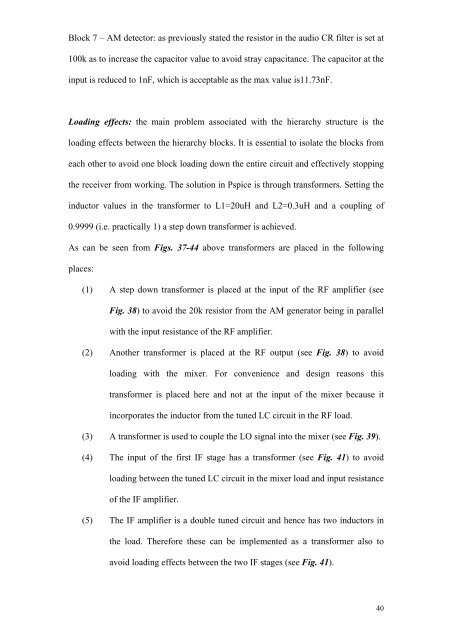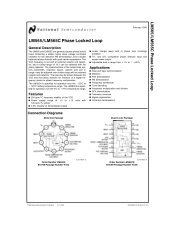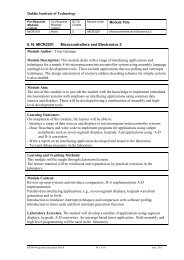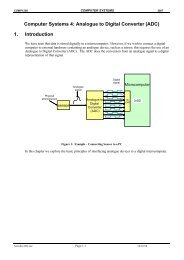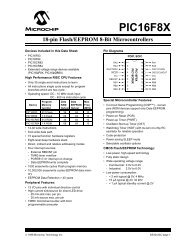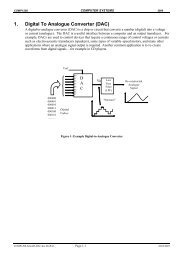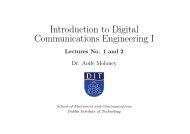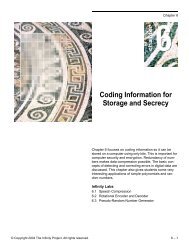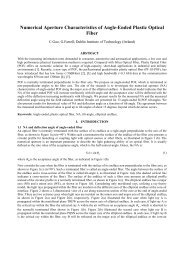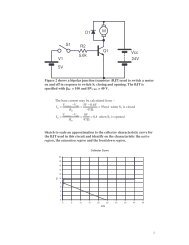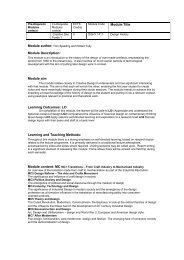simulation of a superheterodyne receiver using pspice - School of ...
simulation of a superheterodyne receiver using pspice - School of ...
simulation of a superheterodyne receiver using pspice - School of ...
Create successful ePaper yourself
Turn your PDF publications into a flip-book with our unique Google optimized e-Paper software.
Block 7 – AM detector: as previously stated the resistor in the audio CR filter is set at<br />
100k as to increase the capacitor value to avoid stray capacitance. The capacitor at the<br />
input is reduced to 1nF, which is acceptable as the max value is11.73nF.<br />
Loading effects: the main problem associated with the hierarchy structure is the<br />
loading effects between the hierarchy blocks. It is essential to isolate the blocks from<br />
each other to avoid one block loading down the entire circuit and effectively stopping<br />
the <strong>receiver</strong> from working. The solution in Pspice is through transformers. Setting the<br />
inductor values in the transformer to L1=20uH and L2=0.3uH and a coupling <strong>of</strong><br />
0.9999 (i.e. practically 1) a step down transformer is achieved.<br />
As can be seen from Figs. 37-44 above transformers are placed in the following<br />
places:<br />
(1) A step down transformer is placed at the input <strong>of</strong> the RF amplifier (see<br />
Fig. 38) to avoid the 20k resistor from the AM generator being in parallel<br />
with the input resistance <strong>of</strong> the RF amplifier.<br />
(2) Another transformer is placed at the RF output (see Fig. 38) to avoid<br />
loading with the mixer. For convenience and design reasons this<br />
transformer is placed here and not at the input <strong>of</strong> the mixer because it<br />
incorporates the inductor from the tuned LC circuit in the RF load.<br />
(3) A transformer is used to couple the LO signal into the mixer (see Fig. 39).<br />
(4) The input <strong>of</strong> the first IF stage has a transformer (see Fig. 41) to avoid<br />
loading between the tuned LC circuit in the mixer load and input resistance<br />
<strong>of</strong> the IF amplifier.<br />
(5) The IF amplifier is a double tuned circuit and hence has two inductors in<br />
the load. Therefore these can be implemented as a transformer also to<br />
avoid loading effects between the two IF stages (see Fig. 41).<br />
40


